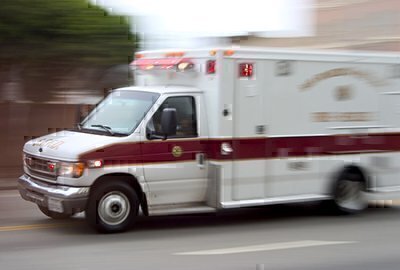What to Do If There is Immediate Danger to Life or Ability to Function
Last updated November 2015

When first confronted with an illness or injury, you must quickly decide whether the case is life-threatening—whether there’s a risk of death or permanent disability if the patient does not receive immediate care (within 30 minutes). If you are faced with what you are sure is a heart attack, your decision is easy; in other cases, you may not be so sure. The rule to live by: If you think the case may require immediate care, assume it does. Making the right decision can be a matter of life and death. In treating heart attacks and serious injuries, even a few minutes can dramatically improve survival rates.
If a case may be life-threatening, call 911: That’s the best way to get treatment started fast.
It will likely take longer to get the patient into a car than to wait for an ambulance. In most parts of the area, the average time between calling for an ambulance and the ambulance’s arrival is less than 10 minutes.
Using an ambulance is also safer: The risk of shock is minimized by allowing the patient to lie down, and an EMS crew can often extricate and transport an injured person without adding to injuries.
Ambulance crews can begin treating patients during transport to hospitals: In communication with hospital staff, they can start IVs and administer drugs and other treatment. And because ambulance crews communicate with hospital staff during transport, the emergency department can prepare to treat the patient immediately upon arrival.
Perhaps the greatest virtue of calling an ambulance is that it relieves the frequently panicky patient—and those assisting the patient—of virtually all responsibilities. The ambulance crew decides on preliminary treatment, drives the vehicle, chooses the hospital, calls ahead for instructions.
In life-threatening—or potentially life-threatening—cases, ambulances take patients to the closest appropriate hospital, given each patient’s specific condition.
In cases where injuries or illness are not immediately life-threatening, most ambulances routinely transport patients to the closest hospital. That practice might be one disadvantage of calling an ambulance: The patient might not be able to choose the best available hospital. But in many areas, ambulance squads will honor a patient’s request to go to a more distant hospital if the additional travel time will not endanger the patient—or other patients by depleting the area’s ambulance coverage.
 On balance, we recommend calling an ambulance, even if doing so limits your choice of hospital. You can be reasonably sure that the hospital emergency department staff at the hospital chosen by the ambulance squad can provide at least the relatively basic treatment needed immediately to stabilize a life-threatening case—opening a blocked breathing passage, stopping massive bleeding, restoring blood loss. When stabilized, the patient can be transferred to a more sophisticated facility.
On balance, we recommend calling an ambulance, even if doing so limits your choice of hospital. You can be reasonably sure that the hospital emergency department staff at the hospital chosen by the ambulance squad can provide at least the relatively basic treatment needed immediately to stabilize a life-threatening case—opening a blocked breathing passage, stopping massive bleeding, restoring blood loss. When stabilized, the patient can be transferred to a more sophisticated facility.
When you call the ambulance, be calm and clear with the person who answers your call. State the address or location carefully, and ask the operator to repeat it—especially if you are using a cell phone. Easily made errors have produced some tragic outcomes.
After you have called an ambulance, administer what first aid you can to the patient, follow any directions the 911 operator gives you, and call the patient’s doctor, if he or she has one. Calling the doctor is important because the doctor might come to the emergency department to work with the staff (although very few do this anymore); the doctor might call and instruct the emergency department staff to bring in a particular specialist whom the doctor trusts; or the doctor might alert the emergency department staff to important facts about the patient’s history.

